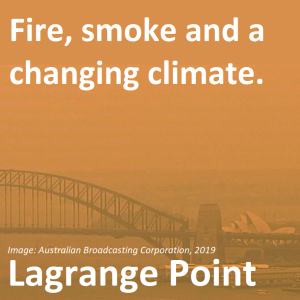Episodes

Monday May 04, 2020
Episode 377 - Hubble turns 30 and still takes amazing images
Monday May 04, 2020
Monday May 04, 2020
We celebrate the life and achievements of Hubble Space telescope and all that have worked on it over it's 30 years in space (and many more before that). We look at the challenges faced by Hubble early on, and the amazing science it is helping contribute to today. From stars being born, to comets tearing themselves apart Hubble sheds light on amazing science. The images Hubble takes are iconic and often look like science fiction. Hubble manages to celebrate it's birthday by capturing images of a comet tearing itself apart.
- Information@eso.org. (n.d.). Hubble Celebrates its 30th Anniversary with a Tapestry of Blazing Starbirth. Retrieved May 02, 2020, from https://www.spacetelescope.org/news/heic2007/
- ESA/Hubble Information Centre. (2020, April 28). Hubble captures breakup of comet ATLAS. ScienceDaily. Retrieved May 1, 2020 from www.sciencedaily.com/releases/2020/04/200428142410.htm

Monday Apr 27, 2020
Episode 376 - Learning from spider webs, venom and combs
Monday Apr 27, 2020
Monday Apr 27, 2020
What can we learn from spiders webs, venom and combs? How do spiders manage to weave intricate webs without getting tangled in them? How can spider's legs help develop next generation nano materials? How can spider venom help us fight back against the opioid crisis? Spider venom is dangerous but it can also help reduce harm in pain management.
- Akello J. Agwa, Poanna Tran, Alexander Mueller, Hue N. T. Tran, Jennifer R. Deuis, Mathilde R. Israel, Kirsten L. McMahon, David J. Craik, Irina Vetter, Christina I. Schroeder. Manipulation of a spider peptide toxin alters its affinity for lipid bilayers and potency and selectivity for voltage-gated sodium channel subtype 1.7. Journal of Biological Chemistry, 2020; 295 (15): 5067 DOI: 10.1074/jbc.RA119.012281
- Anna-Christin Joel, Marco Meyer, Johannes Heitz, Alexander Heiss, Daesung Park, Hana Adamova, Werner Baumgartner. Biomimetic Combs as Antiadhesive Tools to Manipulate Nanofibers. ACS Applied Nano Materials, 2020; 3 (4): 3395 DOI: 10.1021/acsanm.0c00130
- Po Peng, Devi Stuart‐Fox, Szu‐Wei Chen, Eunice J. Tan, Guan‐Lin Kuo, Sean J. Blamires, I‐Min Tso, Mark A. Elgar. High contrast yellow mosaic patterns are prey attractants for orb‐weaving spiders. Functional Ecology, 2020; DOI: 10.1111/1365-2435.13532

Monday Apr 20, 2020
Episode 375 - Solar Panels that work at night and on greenhouses
Monday Apr 20, 2020
Monday Apr 20, 2020
From solar panels on greenhouses to ones that work at night. How can you use radiant heat to make a solar panel work at night? Is there a way to harness energy from the sun even at night? Can you cover a greenhouse with solar panels without destroying your crops? What's the tipping point for harvesting solar energy for your greenhouse? Balancing the light needs of solar panels and of crops in a greenhouse. How does the photosynthesis process know which path to take? Shinning a light on the photosynthetic process.
- Tristan Deppe, Jeremy N. Munday. Nighttime Photovoltaic Cells: Electrical Power Generation by Optically Coupling with Deep Space. ACS Photonics, 2019; 7 (1): 1 DOI: 10.1021/acsphotonics.9b00679
- Eshwar Ravishankar, Ronald E. Booth, Carole Saravitz, Heike Sederoff, Harald W. Ade, Brendan T. O’Connor. Achieving Net Zero Energy Greenhouses by Integrating Semitransparent Organic Solar Cells. Joule, 2020; DOI: 10.1016/j.joule.2019.12.018
- Philip D. Laible, Deborah K. Hanson, James C. Buhrmaster, Gregory A. Tira, Kaitlyn M. Faries, Dewey Holten, Christine Kirmaier. Switching sides—Reengineered primary charge separation in the bacterial photosynthetic reaction center. Proceedings of the National Academy of Sciences, 2020; 117 (2): 865 DOI: 10.1073/pnas.1916119117

Monday Apr 13, 2020
Episode 374 - Lasers, Metal and Insect wings vs Bacteria
Monday Apr 13, 2020
Monday Apr 13, 2020
Taking the fight to bacteria with lasers, metal and insect wings. How can lasers help make a material into a bacteria destroyer? Metal in fantasy has demon slaying properties, but how can it help fight bacteria? What can we learn from insect wings to help make safer implants? What is it about silver that makes it good for killing bacteria (and werewolves). Why are metals so dangerous for bacteria? How can we treat and use metal to make medical devices safer from bacteria?
- Vidhya Selvamani, Amin Zareei, Ahmed Elkashif, Murali Kannan Maruthamuthu, Shirisha Chittiboyina, Davide Delisi, Zheng Li, Lirong Cai, Vilas G. Pol, Mohamed N. Seleem, Rahim Rahimi. Hierarchical Micro/Mesoporous Copper Structure with Enhanced Antimicrobial Property via Laser Surface Texturing. Advanced Materials Interfaces, 2020; 1901890 DOI: 10.1002/admi.201901890
- Asmaa A. Sadoon, Prabhat Khadka, Jack Freeland, Ravi Kumar Gundampati, Ryan H. Manso, Mason Ruiz, Venkata R. Krishnamurthi, Suresh Kumar Thallapuranam, Jingyi Chen, Yong Wang. Silver Ions Caused Faster Diffusive Dynamics of Histone-Like Nucleoid-Structuring Proteins in Live Bacteria. Applied and Environmental Microbiology, 2020; 86 (6) DOI: 10.1128/AEM.02479-19
- J. Jenkins, J. Mantell, C. Neal, A. Gholinia, P. Verkade, A. H. Nobbs, B. Su. Antibacterial effects of nanopillar surfaces are mediated by cell impedance, penetration and induction of oxidative stress. Nature Communications, 2020; 11 (1) DOI: 10.1038/s41467-020-15471-x

Monday Apr 06, 2020
Episode 373 - Deep sea reefs, ocean vents and tiny life
Monday Apr 06, 2020
Monday Apr 06, 2020
This week we look at unlikely partnerships that help sea creatures survive and thrive. What plays a crucial role inside a reef's ecosystem that is often overlooked? What's inside fish guts that help keep a reef healthy? Just how do fish 1000s of kms away end up with the same colonies of microbes? Feel like a tasty snack but stuck in the deep ocean vents, why not methane? How do microbes help worms eat methane?
- Shana Goffredi et al. Methanotrophic bacterial symbionts fuel dense populations of deep-sea feather duster worms (Sabellida, Annelida) and extend the spatial influence of methane seepage. Science Advances, 2020 DOI: 10.1126/sciadv.aay8562
- Jarrod J. Scott, Thomas C. Adam, Alain Duran, Deron E. Burkepile, Douglas B. Rasher. Intestinal microbes: an axis of functional diversity among large marine consumers. Proceedings of the Royal Society B: Biological Sciences, 2020; 287 (1924): 20192367 DOI: 10.1098/rspb.2019.2367

Monday Mar 30, 2020
Episode 372 - Flexible and wearable electronics
Monday Mar 30, 2020
Monday Mar 30, 2020
How can we make flexible electronics for our clothing? What does it take to make a screen that's flexible without relying on plastics? What aquatic by product can help make biodegradable, flexible electronics? Why do your towels go hard when you dry them in the sun? What happens on cotton fibres to make them stiffen up in the sun? How does fabric softener work - we're really not sure.
- Nara Kim, Samuel Lienemann, Ioannis Petsagkourakis, Desalegn Alemu Mengistie, Seyoung Kee, Thomas Ederth, Viktor Gueskine, Philippe Leclère, Roberto Lazzaroni, Xavier Crispin, Klas Tybrandt. Elastic conducting polymer composites in thermoelectric modules. Nature Communications, 2020; 11 (1) DOI: 10.1038/s41467-020-15135-w
- Xiaopan Zhang, Tengyang Ye, Xianghao Meng, Zhihui Tian, Lihua Pang, Yaojie Han, Hai Li, Gang Lu, Fei Xiu, Hai-Dong Yu, Juqing Liu, Wei Huang. Sustainable and Transparent Fish Gelatin Films for Flexible Electroluminescent Devices. ACS Nano, 2020; DOI: 10.1021/acsnano.9b09880
- Takako Igarashi, Masato Hoshi, Koichi Nakamura, Takeshi Kaharu, Ken-ichiro Murata. Direct Observation of Bound Water on Cotton Surfaces by Atomic Force Microscopy and Atomic Force Microscopy–Infrared Spectroscopy. The Journal of Physical Chemistry C, 2020; 124 (7): 4196 DOI: 10.1021/acs.jpcc.0c00423

Monday Mar 23, 2020
Episode 371 - Marine Mammals vs Parasites
Monday Mar 23, 2020
Monday Mar 23, 2020
Its a battle between Marine Mammals and Parasites. How does an opossum parasite start killing sea otters? In #2020MMM unexpected combatants can ruin your day, just like how opossum parasites are taking out sea otters. How does a parasite make a long journey from land to end up out at sea? Inside raw fish, parasitic worm populations are booming. This is bad news for marine mammals. Conserving marine mammals can be a delicate balancing act as parasite populations can also start to thrive.
- Tristan L. Burgess, M. Tim Tinker, Melissa A. Miller, Woutrina A. Smith, James L. Bodkin, Michael J. Murray, Linda M. Nichol, Justin A. Saarinen, Shawn Larson, Joseph A. Tomoleoni, Patricia A. Conrad, Christine K. Johnson. Spatial epidemiological patterns suggest mechanisms of land-sea transmission for Sarcocystis neurona in a coastal marine mammaTl. Scientific Reports, 2020; 10 (1) DOI: 10.1038/s41598-020-60254-5
- Evan A. Fiorenza, Catrin A. Wendt, Katie A. Dobkowski, Teri L. King, Marguerite Pappaionou, Peter Rabinowitz, Jameal F. Samhouri, Chelsea L. Wood. It’s a wormy world: Meta-analysis reveals several decades of change in the global abundance of the parasitic nematodes Anisakis spp. and Pseudoterranova spp. in marine fishes and invertebrates. Global Change Biology, 2020; DOI: 10.1111/gcb.15048

Monday Mar 16, 2020
Episode 370 - Explosions in space and citizen science
Monday Mar 16, 2020
Monday Mar 16, 2020
From galactic explosions, and waiting for supernova space is full of mysteries. What happens when a super massive black hole in a massive galaxy cluster...erupts? A massive explosion shred a hole 15 times larger than the Milky Way. What is happening with Betelgeuse? Could Betelgeuse just have shed it's coat? Is Betelgeuse about to go 'nova or is something else happening? We find out about galactic research you can do from your couch. Tracing out a spiral is easy for humans to do, so why not help trace out a galaxy? Looking for something to do at home, why not citizen science helping trace galaxies?
References:
- S. Giacintucci, M. Markevitch, M. Johnston-Hollitt, D. R. Wik, Q. H. S. Wang, T. E. Clarke. Discovery of a giant radio fossil in the Ophiuchus galaxy cluster. The Astrophysical Journal, 2020 [link]
- Patrick Treuthardt, Ian B Hewitt. Comparison of galaxy spiral arm pitch angle measurements using manual and automated techniques. Monthly Notices of the Royal Astronomical Society, 2020; 493 (3): 3854 DOI: 10.1093/mnras/staa354
- Emily M. Levesque, Philip Massey. Betelgeuse Just Isn't That Cool: Effective Temperature Alone Cannot Explain the Recent Dimming of Betelgeuse. submitted to arXiv, 2020 [link]

Monday Mar 09, 2020
Episode 369 - 2020MMM, Endangered species and City Foxes
Monday Mar 09, 2020
Monday Mar 09, 2020
Conservation, Adaptation and March mammal madness, an animal special. What is the difference between an urban and a country fox? Why is an city fox bolder than a country fox? How many eels can you fit in a kilogram bucket? How do critically endangered eels end up on the supermarket shelves? How do you smuggle vast quantities of eel across borders?
Hindie, K. March Mammal Madness 2020. Retrieved from http://mammalssuck.blogspot.com/2020/02/march-mammal-madness-2020.html
Sophia E. Kimmig, Joscha Beninde, Miriam Brandt, Anna Schleimer, Stephanie Kramer‐Schadt, Heribert Hofer, Konstantin Börner, Christoph Schulze, Ulrich Wittstatt, Mike Heddergott, Tanja Halczok, Christoph Staubach, Alain C. Frantz. Beyond the landscape: Resistance modelling infers physical and behavioural gene flow barriers to a mobile carnivore across a metropolitan area. Molecular Ecology, 2020; 29 (3): 466 DOI: 10.1111/mec.15345
John L. Richards, Victoria Sheng, Chung Wing Yi, Chan Lai Ying, Ng Sin Ting, Yvonne Sadovy, David Baker. Prevalence of critically endangered European eel (Anguilla anguilla) in Hong Kong supermarkets. Science Advances, 2020; 6 (10): eaay0317 DOI: 10.1126/sciadv.aay0317

Monday Mar 02, 2020
Episode 368 - Brain injuries, epilepsy and treatment options
Monday Mar 02, 2020
Monday Mar 02, 2020
How can we give better quality of life for those suffering from neurological conditions? Getting a concussion is bad enough, but why do people often develop epilepsy afterwards? What is the link between concussions and epilepsy? How can we effectively reduce the risk of epilepsy after a concussion? For certain epilepsy conditions in children, CBD can help reduce seizure risk, but what type is best? Is pharmaceutical or artisan CBD for children with epilepsy?
- Akshata A. Korgaonkar, Ying Li, Dipika Sekhar, Deepak Subramanian, Jenieve Guevarra, Bogumila Swietek, Alexandra Pallottie, Sukwinder Singh, Kruthi Kella, Stella Elkabes, Vijayalakshmi Santhakumar. Toll‐like Receptor 4 Signaling in Neurons Enhances Calcium‐Permeable α‐Amino‐3‐Hydroxy‐5‐Methyl‐4‐Isoxazolepropionic Acid Receptor Currents and Drives Post‐Traumatic Epileptogenesis. Annals of Neurology, 2020; DOI: 10.1002/ana.25698
- American Academy of Neurology. (2020, February 27). Artisanal CBD not as effective as pharmaceutical CBD for reducing seizures. ScienceDaily. Retrieved February 29, 2020 from www.sciencedaily.com/releases/2020/02/200227160545.htm

Monday Feb 24, 2020
Episode 367 - Sustainable and green Chemistry
Monday Feb 24, 2020
Monday Feb 24, 2020
Making chemistry green and sustainable, from cheaper catalyst to sorting solvents. How can you make catalysts cheaper and re-usable? Is there a cheaper catalyst to breakdown CO2? How can we make a circular carbon economy? Solvents play an important role in chemistry so how do you greenly find the right match? Green chemistry can be made more efficient using CO2.
- Youngdong Song, Ercan Ozdemir, Sreerangappa Ramesh, Aldiar Adishev, Saravanan Subramanian, Aadesh Harale, Mohammed Albuali, Bandar Abdullah Fadhel, Aqil Jamal, Dohyun Moon, Sun Hee Choi, Cafer T. Yavuz. Dry reforming of methane by stable Ni–Mo nanocatalysts on single-crystalline MgO. Science, 2020; 367 (6479): 777 DOI: 10.1126/science.aav2412
- Suyong Han, Keshav Raghuvanshi, Milad Abolhasani. Accelerated Material-Efficient Investigation of Switchable Hydrophilicity Solvents for Energy-Efficient Solvent Recovery. ACS Sustainable Chemistry & Engineering, 2020; DOI: 10.1021/acssuschemeng.9b07304

Monday Feb 17, 2020
Episode 366 - The YORP Effect, Star Brawls and Solar wind
Monday Feb 17, 2020
Monday Feb 17, 2020
What happens when stars brawl? What do they leave behind? When stars are dying they take down everything and everything around them from asteroids to other stars. What is the YORP effect? How do some tiny solar particles destroy an asteroid? Spiraling out of control, asteroids get YORP-ed at the end of a star's life. When a star gets to the end of it's life, it may swell in size, taking out asteroids and nearby stars.
- H. Olofsson, T. Khouri, M. Maercker, P. Bergman, L. Doan, D. Tafoya, W. H. T. Vlemmings, E. M. L. Humphreys, M. Lindqvist, L. Nyman, S. Ramstedt. HD 101584: circumstellar characteristics and evolutionary status. Astronomy & Astrophysics, 2019; 623: A153 DOI: 10.1051/0004-6361/201834897
- Dimitri Veras, Daniel J Scheeres. Post-main-sequence debris from rotation-induced YORP break-up of small bodies – II. Multiple fissions, internal strengths, and binary production. Monthly Notices of the Royal Astronomical Society, 2020; 492 (2): 2437 DOI: 10.1093/mnras/stz3565
- M. I. Desai, D. G. Mitchell, J. R. Szalay, E. C. Roelof, J. Giacalone, M. E. Hill, D. J. McComas, E. R. Christian, N. A. Schwadron, R. L. McNutt Jr., M. E. Wiedenbeck, C. Joyce, C. M. S. Cohen, R. W. Ebert, M. A. Dayeh, R. C. Allen, A. J. Davis, S. M. Krimigis, R. A. Leske, W. H. Matthaeus, O. Malandraki, R. A. Mewaldt, A. Labrador, E. C. Stone, S. D. Bale, M. Pulupa, R. J. MacDowall, J. C. Kasper. Properties of Suprathermal-through-energetic He Ions Associated with Stream Interaction Regions Observed over the Parker Solar Probe’s First Two Orbits. The Astrophysical Journal Supplement Series, 2020; 246 (2): 56 DOI: 10.3847/1538-4365/ab65ef

Monday Feb 10, 2020
Episode 365 - Wasps, Bees, tasty meals and pesticide.
Monday Feb 10, 2020
Monday Feb 10, 2020
From wasps to bees how are insects adapting to a changing world. What type of food do bees prefer? Can a bee be a fussy eater? What makes a tasty meal for a Bee and what would they avoid like the plague? What changes can be introduced into the microbiome by pesticides? How can pesticides change the microbiome of wasps and develop into resistance? Can pesticide actually make lives harder for themselves by building tolerance in insects? How does an Asian hornet end up in Northern Europe?
- Wang et al. Changes in microbiome confer multigenerational host resistance after sub-toxic pesticide exposure. Cell Host & Microbe, 2020 DOI: 10.1016/j.chom.2020.01.009
- Martin Husemann, Andreas Sterr, Swen Mack, Rudolf Abraham. The northernmost record of the Asian hornet Vespa velutina nigrithorax (Hymenoptera, Vespidae). Evolutionary Systematics, 2020; 4 (1): 1 DOI: 10.3897/evolsyst.4.47358
- Fabian A. Ruedenauer, David Raubenheimer, Daniela Kessner‐Beierlein, Nils Grund‐Mueller, Lisa Noack, Johannes Spaethe, Sara D. Leonhardt. Best be(e) on low fat: linking nutrient perception, regulation and fitness. Ecology Letters, 2020; DOI: 10.1111/ele.13454

Monday Feb 03, 2020
Episode 364 - Coronavirus from SARS to MERs and nConv2019
Monday Feb 03, 2020
Monday Feb 03, 2020
The Coronavirus family is a dangerous lot from SARS to MERS and Novel Coronavirus 2019. This week we look at the history of Coronavirus outbreaks, research into past infections and public health strategy. We do some fact checking on Coronavirus myths and fears. What lessons were learnt from the SARS outbreak of '03 that can help today in '20? How can turning off the cells recycling plant stop Coronaviruses in their tracks? What role does cell autophagy play in spreading or stopping MERS? What can we learn from the sequenced genomes of coronaviruses? How can tracking the ACE2 gene help people monitor the mutation of the coronavirus strains?
- Lewis, D. (2020). Coronavirus outbreak: what’s next? Nature. doi: 10.1038/d41586-020-00236-9
- Hollingsworth, J. (2020, January 30). The memory of SARS looms over the Wuhan virus. Here's how the outbreaks compare. Retrieved from https://edition.cnn.com/2020/01/29/china/sars-wuhan-virus-explainer-intl-hnk-scli/index.html
- Alerts - Novel coronavirus - Frequently asked questions. (n.d.). Retrieved from https://www.health.nsw.gov.au/Infectious/alerts/Pages/coronavirus-faqs.aspx#1-1
- Coronavirus latest: WHO declares global emergency. (2020, January 30). Retrieved from https://www.nature.com/articles/d41586-020-00154-w
- Yushun Wan, Jian Shang, Rachel Graham, Ralph S. Baric, Fang Li. Receptor recognition by novel coronavirus from Wuhan: An analysis based on decade-long structural studies of SARS. Journal of Virology, 2020; DOI: 10.1128/JVI.00127-20
- Nils C. Gassen, Daniela Niemeyer, Doreen Muth, Victor M. Corman, Silvia Martinelli, Alwine Gassen, Kathrin Hafner, Jan Papies, Kirstin Mösbauer, Andreas Zellner, Anthony S. Zannas, Alexander Herrmann, Florian Holsboer, Ruth Brack-Werner, Michael Boshart, Bertram Müller-Myhsok, Christian Drosten, Marcel A. Müller, Theo Rein. SKP2 attenuates autophagy through Beclin1-ubiquitination and its inhibition reduces MERS-Coronavirus infection. Nature Communications, 2019; 10 (1) DOI: 10.1038/s41467-019-13659-4

Monday Jan 27, 2020
Episode 363 - Mysteries from underwater volcanoes
Monday Jan 27, 2020
Monday Jan 27, 2020
There are mysterious things lurking at the bottom of the ocean, from underwater volcanoes to mysterious graphite. Where did a pumice raft floating across the Pacific come from? Why is a raft of pumice larger than Manhattan heading to Australia? What can we learn by studying petit-spot volcanoes underneath the ocean? What connects young volcanoes with the motion of the tectonic plates? What roll do hydrothermal vents play in the carbon cycle? Where does all this graphite in the oceans come from?
- Philipp A. Brandl, Florian Schmid, Nico Augustin, Ingo Grevemeyer, Richard J. Arculus, Colin W. Devey, Sven Petersen, Margaret Stewart, Heidrun Kopp, Mark D. Hannington. The 6–8 Aug 2019 eruption of ‘Volcano F’ in the Tofua Arc, Tonga. Journal of Volcanology and Geothermal Research, 2019; 106695 DOI: 10.1016/j.jvolgeores.2019.106695
- Naoto Hirano, Shiki Machida, Hirochika Sumino, Kenji Shimizu, Akihiro Tamura, Taisei Morishita, Hideki Iwano, Shuhei Sakata, Teruaki Ishii, Shoji Arai, Shigekazu Yoneda, Tohru Danhara, Takafumi Hirata. Petit-spot volcanoes on the oldest portion of the Pacific plate. Deep Sea Research Part I: Oceanographic Research Papers, 2019; 154: 103142 DOI: 10.1016/j.dsr.2019.103142
- Harry MacKay, C. Anthony Scott, Jack D. Duryea, Maria S. Baker, Eleonora Laritsky, Amanda E. Elson, Theodore Garland, Marta L. Fiorotto, Rui Chen, Yumei Li, Cristian Coarfa, Richard B. Simerly, Robert A. Waterland. DNA methylation in AgRP neurons regulates voluntary exercise behavior in mice. Nature Communications, 2019; 10 (1) DOI: 10.1038/s41467-019-13339-3

Monday Jan 20, 2020
Episode 362 - Life after a disaster from Fukashima to Chernobyl
Monday Jan 20, 2020
Monday Jan 20, 2020
What happens next after disaster strikes and people flee for safety? How do wildlife move in when people move out of a disaster zone? How do animals moving into an evacuated area change with no humans around? What is the most effective thing to do if you live near a disaster area? How do we assess risk and life expectancy impact of living near a disaster zone? Is it more dangerous to live near a nuclear plant or in the diesel smog of the big city?
- Phillip C Lyons, Kei Okuda, Matthew T Hamilton, Thomas G Hinton, James C Beasley. Rewilding of Fukushima's human evacuation zone. Frontiers in Ecology and the Environment, 2020; DOI: 10.1002/fee.2149
- Philip Thomas, John May. Coping after a big nuclear accident. Process Safety and Environmental Protection, 2017; 112: 1 DOI: 10.1016/j.psep.2017.09.013

Monday Jan 13, 2020
Episode 361 - Fast Radio Bursts, Cosmic Rays and Antarctica
Monday Jan 13, 2020
Monday Jan 13, 2020
From Fast Radio Bursts to Cosmic rays, interstellar mystery solving is a team effort. Mysterious repeating signals from space are tricky to localize, like spotting a person on the moon from here on Earth. What can fast radio bursts from billions of light years away tell us about the nature of the universe? How do you hunt for the source of a mysterious radio burst billions of light years away? How does a tiger, a balloon and Antarctica help us understand Supernova? What's the best place to hunt for cosmic rays; floating above Antarctica with a Super Tiger.
- B. Marcote, K. Nimmo, J. W. T. Hessels, S. P. Tendulkar, C. G. Bassa, Z. Paragi, A. Keimpema, M. Bhardwaj, R. Karuppusamy, V. M. Kaspi, C. J. Law, D. Michilli, K. Aggarwal, B. Andersen, A. M. Archibald, K. Bandura, G. C. Bower, P. J. Boyle, C. Brar, S. Burke-Spolaor, B. J. Butler, T. Cassanelli, P. Chawla, P. Demorest, M. Dobbs, E. Fonseca, U. Giri, D. C. Good, K. Gourdji, A. Josephy, A. Yu. Kirichenko, F. Kirsten, T. L. Landecker, D. Lang, T. J. W. Lazio, D. Z. Li, H.-H. Lin, J. D. Linford, K. Masui, J. Mena-Parra, A. Naidu, C. Ng, C. Patel, U.-L. Pen, Z. Pleunis, M. Rafiei-Ravandi, M. Rahman, A. Renard, P. Scholz, S. R. Siegel, K. M. Smith, I. H. Stairs, K. Vanderlinde, A. V. Zwaniga. A repeating fast radio burst source localized to a nearby spiral galaxy. Nature, 2020; DOI: 10.1038/s41586-019-1866-z
- Ogliore, T. (2020, January 10). SuperTIGER on its second prowl -- 130,000 feet above Antarctica: The Source: Washington University in St. Louis. Retrieved from https://source.wustl.edu/2020/01/supertiger-on-its-second-prowl-130000-feet-above-antarctica/.

Monday Jan 06, 2020
Episode 360 - Imaging hard-working Cells keeping you alive during illness
Monday Jan 06, 2020
Monday Jan 06, 2020
How do we peer into the inner workings of our cells, especially during their response to a medical emergency? What role does fibroblasts play to protect your heart after a heart attack? When is your body hardest at work repairing damage after a heart attack? What stem cells control your blood cells? How can we get a picture of the complex 3D shape of blood stem cells in your bone marrow? What role does bone marrow play in blood regulation?
References:
- Chiara Baccin, Jude Al-Sabah, Lars Velten, Patrick M. Helbling, Florian Grünschläger, Pablo Hernández-Malmierca, César Nombela-Arrieta, Lars M. Steinmetz, Andreas Trumpp, Simon Haas. Combined single-cell and spatial transcriptomics reveal the molecular, cellular and spatial bone marrow niche organization. Nature Cell Biology, 2019; DOI: 10.1038/s41556-019-0439-6
- Zohreh Varasteh, Sarajo Mohanta, Stephanie Robu, Miriam Braeuer, Yuanfang Li, Negar Omidvari, Geoffrey Topping, Ting Sun, Stephan G. Nekolla, Antonia Richter, Christian Weber, Andreas Habenicht, Uwe A. Haberkorn, Wolfgang A. Weber. Molecular Imaging of Fibroblast Activity After Myocardial Infarction Using a 68Ga-Labeled Fibroblast Activation Protein Inhibitor, FAPI-04. Journal of Nuclear Medicine, 2019; 60 (12): 1743 DOI: 10.2967/jnumed.119.226993

Monday Dec 30, 2019
Episode 359 - Life surviving on freezing planets, faint suns and meteorites
Monday Dec 30, 2019
Monday Dec 30, 2019
What can bacteria from an iron ore rich lake tell us about life on early earth? Have scientists finally solved a Carl Sagan paradox about life on early earth? When the earth was young, so was the sun, and that meant less light and heat. How did early life on earth survive if there was not enough sunlight to keep it warm? How did iron ore eating and secreting bacteria help lead to widespread life on our planet? How did micro organisms get enough oxygen to survive when the entire planet was frozen over? What can iron ore deposits tell us about life surviving when the entire planet was frozen over? Can life survive on a meteorite, the answer is surprising. How can a microbe be more suited to life on a meteorite than on earth?
- Katharine J. Thompson, Paul A. Kenward, Kohen W. Bauer, Tyler Warchola, Tina Gauger, Raul Martinez, Rachel L. Simister, Céline C. Michiels, Marc Llirós, Christopher T. Reinhard, Andreas Kappler, Kurt O. Konhauser, Sean A. Crowe. Photoferrotrophy, deposition of banded iron formations, and methane production in Archean oceans. Science Advances, 2019; 5 (11): eaav2869 DOI: 10.1126/sciadv.aav2869
- Maxwell A. Lechte, Malcolm W. Wallace, Ashleigh van Smeerdijk Hood, Weiqiang Li, Ganqing Jiang, Galen P. Halverson, Dan Asael, Stephanie L. McColl, Noah J. Planavsky. Subglacial meltwater supported aerobic marine habitats during Snowball Earth. Proceedings of the National Academy of Sciences, 2019; 201909165 DOI: 10.1073/pnas.1909165116
- Tetyana Milojevic, Denise Kölbl, Ludovic Ferrière, Mihaela Albu, Adrienne Kish, Roberta L. Flemming, Christian Koeberl, Amir Blazevic, Ziga Zebec, Simon K.-M. R. Rittmann, Christa Schleper, Marc Pignitter, Veronika Somoza, Mario P. Schimak, Alexandra N. Rupert. Exploring the microbial biotransformation of extraterrestrial material on nanometer scale. Scientific Reports, 2019; 9 (1) DOI: 10.1038/s41598-019-54482-7

Monday Dec 23, 2019
Episode 358 - Wildfires, climate change, smog and charcoal
Monday Dec 23, 2019
Monday Dec 23, 2019
As the climate changes, wildfires become more common and more dangerous. Smoke clouds from wildfires can linger for weeks, but what chemistry changes inside the smog? Aerosols amongst other particles lurk inside wildfire smoke. How do we study the changes in wildfire smoke; by flying planes through the plumes. How do wildfires impact the CO2 emissions of a region? Can wildfires help store carbon through charcoal? What can charred biomass to do help capture carbon?
- Kouji Adachi, Arthur J. Sedlacek, Lawrence Kleinman, Stephen R. Springston, Jian Wang, Duli Chand, John M. Hubbe, John E. Shilling, Timothy B. Onasch, Takeshi Kinase, Kohei Sakata, Yoshio Takahashi, Peter R. Buseck. Spherical tarball particles form through rapid chemical and physical changes of organic matter in biomass-burning smoke. Proceedings of the National Academy of Sciences, 2019; 201900129 DOI: 10.1073/pnas.1900129116
- Matthew W. Jones, Cristina Santín, Guido R. van der Werf, Stefan H. Doerr. Global fire emissions buffered by the production of pyrogenic carbon. Nature Geoscience, 2019; DOI: 10.1038/s41561-019-0403-x

